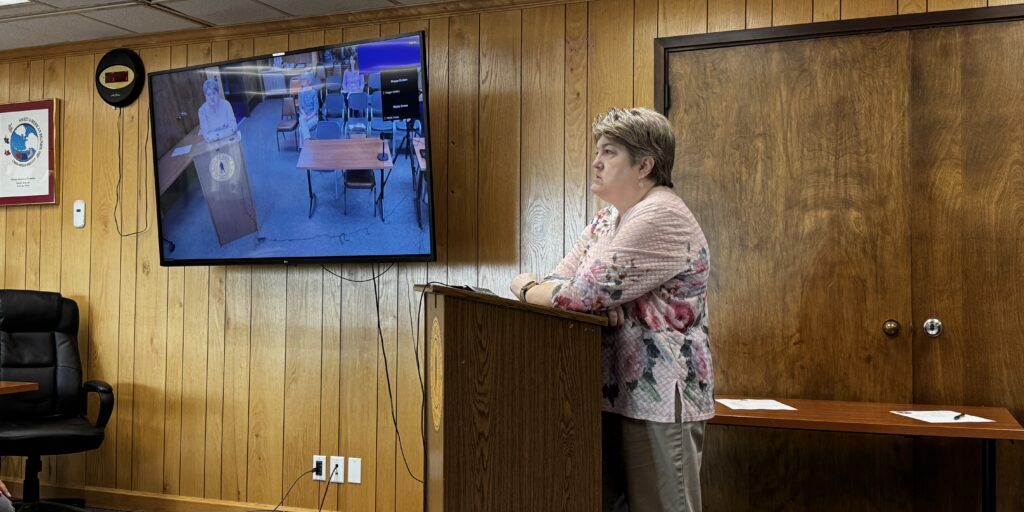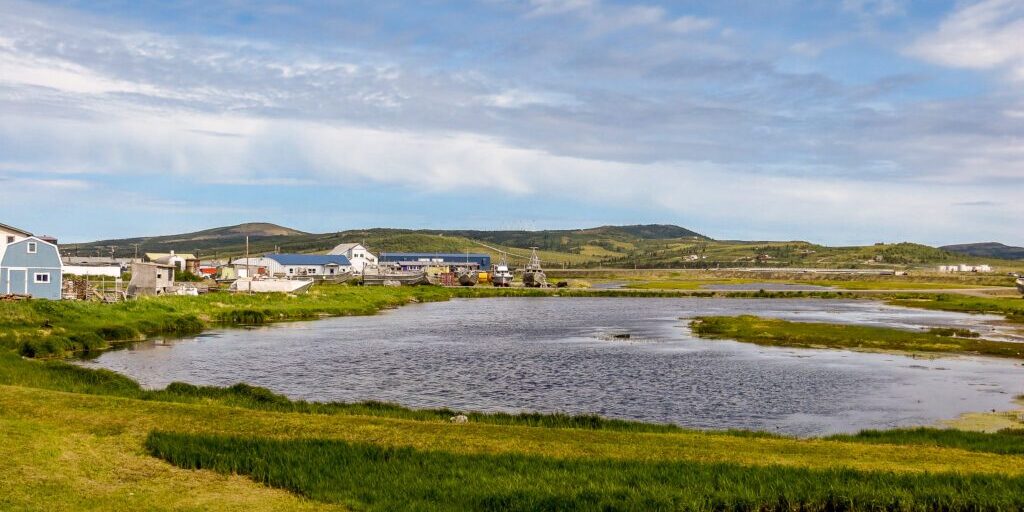A pump to the city of Unalakleet’s water supply gave out nearly a week ago, pumping too much of the chemical ferric chloride, which is used to help with turbidity in the water, into the city’s water tank.
KNOM’s Katie Kazmierski reports on how Unalakleet is trying to find long-term solutions for aging infrastructure threatening its water quality.
With levels in the city’s water tank already low and levels of ferric chloride high, Unalakleet residents dealt with foul-smelling, orange water when they turned on their faucets early this week.
Davida Hanson, city manager of Unalakleet, says thanks to the work of the city’s Public Works department, Unalakleet’s water is now clear and back to normal levels of chloride. According to Hanson, these sort of water issues aren’t out of the ordinary for the city.
“I mean our tank is just low. And we do it every summer; we fight the battle every summer.”
The “battle” is trying to keep the city’s water supply at a sustainable level during the season when the community uses the most water. Unalakleet’s water tank has the capacity to hold 26 feet of water, which is about a million gallons. Its current level is just about eight feet. According to Hanson, five feet warrants a boil water notice from the Alaska Department of Environmental Conservation (ADEC).
Summer subsistence activities require a lot of water, and an increase in baths and showers, Hanson says. But the main spike in water usage every summer is from one local business: Southern Norton Sound Seafood Products, the fish plant ran by Norton Sound Economic Development Corporation (NSEDC). Here’s Hanson again:
“Once the fish plant starts processing fish, then we go through a lot of water every day… last month, they used about 700,000 (gallons) of water, which is a lot considering, you know, we only hold a million gallons.”
Laureli Ivanoff, the Communications Director at NSEDC, says the fish plant does its part to “scale back” in times like these, which comes with a cost to residents’ livelihoods.
“Sometimes, the plant will run 24 hours a day, whereas right now when there’s a water shortage, we also take conservation measures, just like any other resident does. We pull back, we’re only down to one shift, you know, because we’re all in water conservation mode… we could be employing more people, processing more fish, but because there is a water shortage, just like any resident, we have to scale back. And that means working less.”
The fish plant is also in the process of constructing its own well and desalination unit to help source its own water.
Racheal Lee is the Environmental Health Director at Norton Sound Health Corporation. On Monday, she responded to a request to test a water sample from the city, which by that point came back with normal, safe levels of iron. She says Unalakleet’s ongoing water troubles are the result of old infrastructure “at its capacity.”
According to Lee, in spite of Unalakleet’s efforts to actively maintain their water infrastructure, the city is, “always on the threshold of emergency.”
Added to that is the fact that Unalakleet’s main water source, Powers Creek, is drying up. The community is looking at switching to groundwater, and they’ve already dug eight wells. But City Manager Davida Hanson isn’t convinced wells are the long-term solution.
She says just five miles outside city limits lies Unalakleet’s “ideal” water source.
“… we can supply the Norton Sound region with water from North River. There’s an ample supply of water there, and we know it, we see it… the one thing about the well farm project is… is this water gonna last? I mean, I want water here for my grandchildren’s grandchildren. And we [the City Office] feel that North River can provide that.”
According to Hanson, it cost the city $8.8 million for the well farm project, over $1 million for each well. Sourcing water from North River would cost somewhere between $14 and $20 million, because the city would have to build a road to get to it.
For now, the problem remains: Unalakleet does not have the capacity to pump as much water as it needs, making low, sometimes dangerous water tank levels a harsh reality for the community.
Hanson spoke to Senator Dan Sullivan and assistant secretary for Indian Affairs at the U.S. Department of Interior, Tara Sweeney, on the city’s infrastructure needs last week. She says they plan to “work with” the city.
Unalakleet did not at any point go on a boil-water notice, though the city advised residents to seek out alternative sources of water. The Alaska Department of Environmental Conservation continues to coordinate with the city and NSHC to monitor ferric chloride levels in Unalakleet’s water.
Image at top: A sunny day in Unalakleet, Alaska. Photo: Maddie Winchester, KNOM file.




